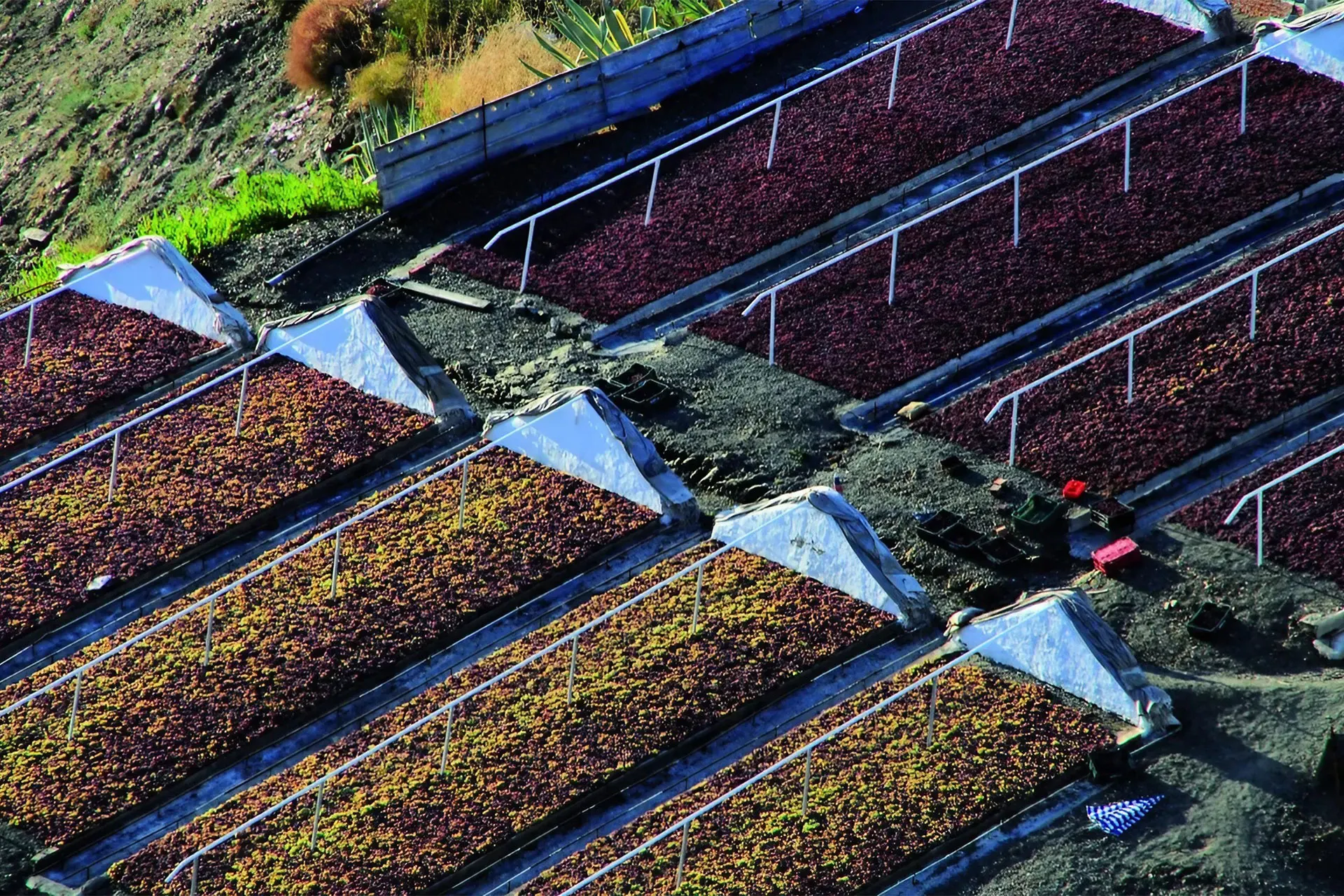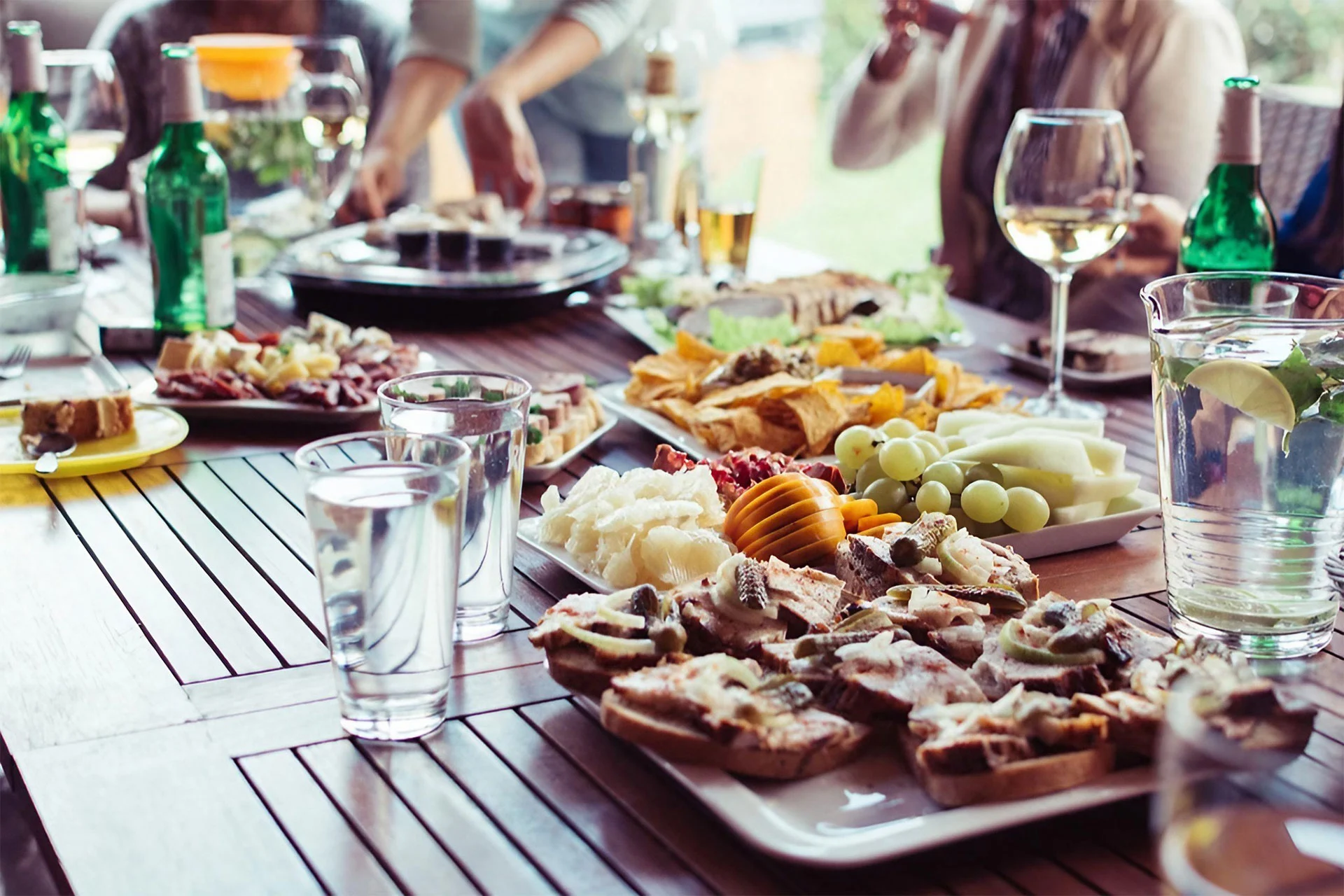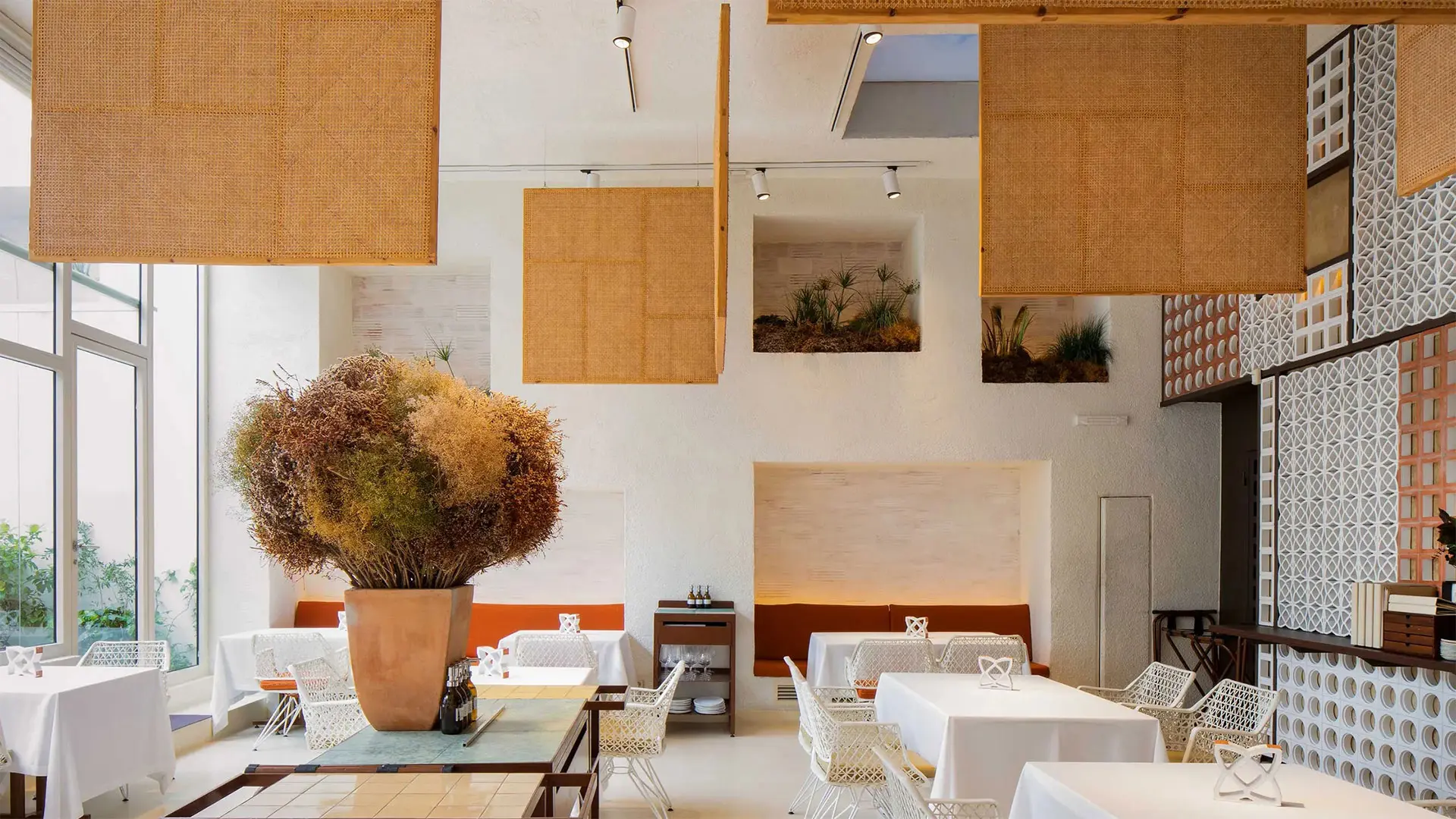Exploring how the three cultures of Judaism, Christianity and Islam combined to create the Andalucian culture we know today. First, we look at the beautiful city of Córdoba.
Andalucía’s rich history was fed by its three most influential cultures and their religions: Judaism, Islam and Christianity. Whilst Andalucía is home to some of the Europe’s oldest cities, established over 3,000 years ago, the highlights of the three cultures (tres culturas) can be found in the ‘golden triangle’ of Córdoba, Granada and Sevilla.
These three cities form our Classic Andalucía Tour, taking in the sites and tasting the delicious cuisine shaped by the land, climate and cultures.
We start our three cultures blog tour with Córdoba.
The Jewel of Andalucía
Córdoba was one of the greatest cities of the medieval world. The city’s heyday started in the 8th century with the first Moorish conquest. Some 300 mosques, numerous palaces and civic structures established Cordoba as Europe’s centre of civilisation and learning. It rivalled the eastern cities of Constantinople, Baghdad and Damascus.
Hundreds of these buildings remain. Indeed, UNESCO designated the whole of the Old Town as a World Heritage site. Within that centre is the Jewish Quarter, which is home to one of only two synagogues remaining in Andalucía.
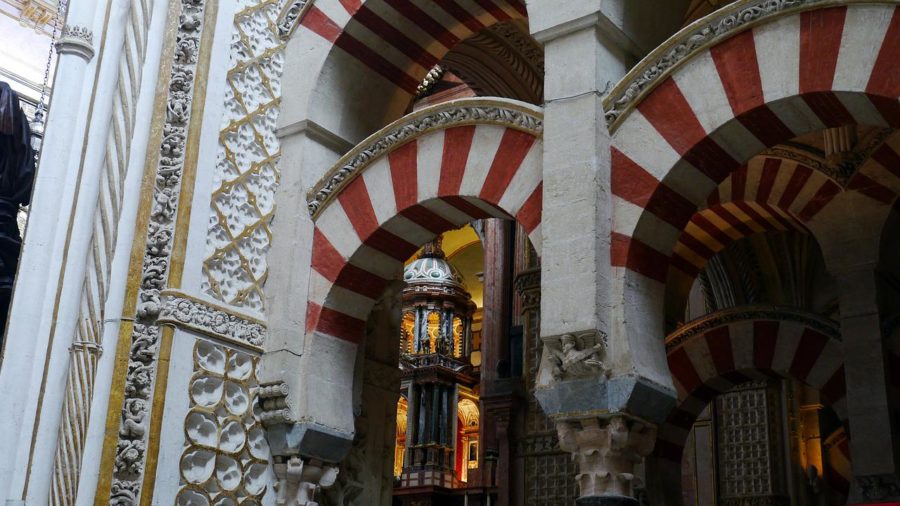
The most famous site is the Mezquita. As you approach the Old Town across the Roman Bridge, the walls and roof of the mosque-cathedral rise in front of you. Over two centuries, workmen turned this mosque into the second largest in the Islamic kingdom.
The Christians re-conquered the city in 1236, but the beautiful architecture of the mosque saved it from destruction. Instead, a Renaissance cathedral rose from its heart, thus preserving the iconic 856 columns and double arches made of onyx, marble and granite.
But there is more to Córdoba than the Mezquita.
Explore the city of wonders
The narrow winding streets of Córdoba Old Town are themselves an art form. Twisting from plaza to plaza, sometimes in the glare of the sun, often shaded, they lead you from magical corners to glorious views.
The Alcázar de los Reyes Cristianos (Castle of the Christian Kings), reflects not just the Christian but also the Moorish roots of Córdoba. Built amongst the ruins of a Moorish fort, it had been the seat of the Caliphate’s government. It also housed the largest library in the West.
The current building is a 14th century castle incorporating only a small part of the original remains. However, the Mudéjar style is a key element of its design. The gardens are a scaled down version of those at Granada’s Alhambra, with fragrant orange trees and colourful flowers lining the edges of the pools.
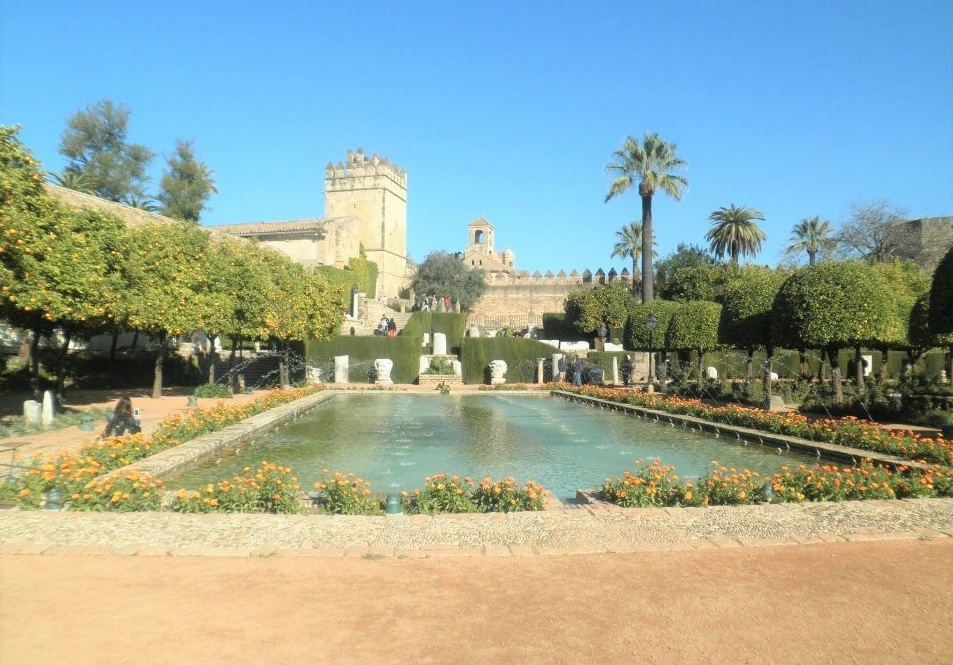
Moving away from the heart of the medieval city you will find the Renaissance Palacio di Viana. With its 12 patios, the palace is at its best in springtime. Five centuries of art and architecture fill the palace itself – an infinite variety of sensations.
The Roman Bridge is one of the main pedestrian thoroughfares into the old city. At either end are the Torre de Calahorra and the Puerta del Puente. On the south side, the fortified gate known as the Torre de Calahorra (Calahorra Tower) is of Islamic origin and one of the oldest defensive buildings in Córdoba. It now houses a museum dedicated to the times when Jews, Muslims and Christians lived peacefully side-by-side in the city.
Cordoba Patio Festival
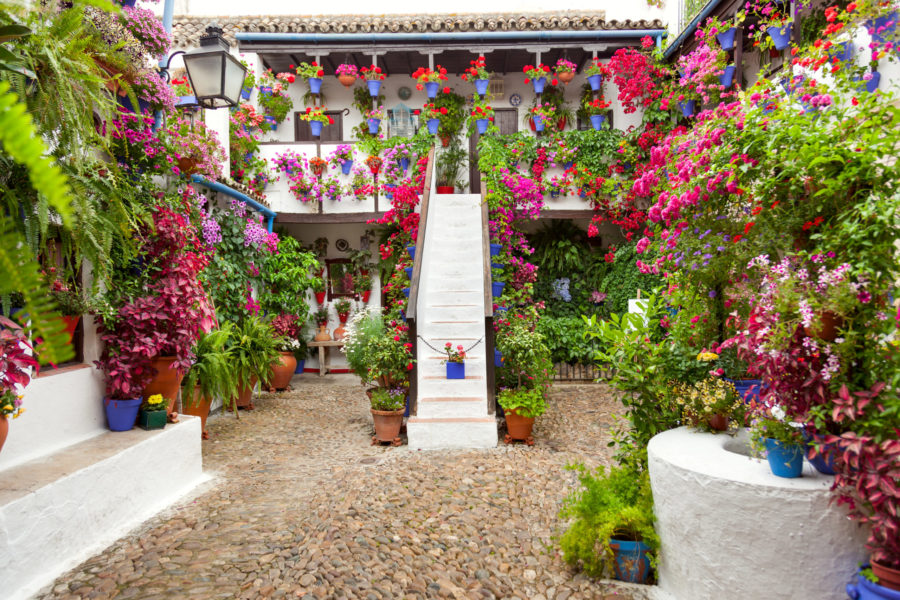
As you walk the streets and peer into open doors, you’ll probably glimpse the patios for which Córdoba is renowned.
Every May, Córdoba holds the festival de los patios, a riot of colour and scent as residents open their patios filled with flowers, herbs, and trees, to the public. The oldest patios are in the Judería, Santa Marina, San Augustin, and Santo Basilio barrios.
In the Judería (Jewish Quarter), patios tend to be smaller than in the other areas. A good example of this is in La Casa Andalusí, next to the synagogue. The house-museum transports visitors back to Caliphate times. Its cool courtyards with fountains, aromatic flowers and greenery dim the buzz from outside.
Why patios?
In the days of the Romans, houses were built around a central courtyard; a trend the Moors continued, introducing decorative tiles, water features and colourful plants as a way of keeping their homes cool.
The Christians and Jews also carried on the tradition, a blessing as the heat of the Andalucían summer can be stifling.
Festival dates 2022
This year the festival runs from 3 to 15 May, with patios usually open Monday to Friday, 11.00 am to 2.00 pm and 6.00 pm to 10.00 pm (midnight on Fridays and Saturdays). Sunday opening hours are 3.00 pm and 9.00 pm. More information can be found here.
Cordobese Cuisine

The food and drink of a city or region is determined by the climate, land and the culture of the people that live within it. Needless to say, Córdoba’s cuisine is a multicultural affair.
One of the most popular dishes is Salmorejo, a cold tomato soup similar to gazpacho, perfect for the steamy summer days. As with many great dishes, the key lies in its simplicity. The original Moorish version was without tomatoes – simply bread, garlic, oil, salt and vinegar.
Flamenquín is a meat lover’s dish, make no mistake. Cured ham and pork loin are rolled together and deep-fried. There are competing claims to the origin of the dish with Bujalance village claiming it for Córdoba and Andújar for neighbouring Jaén.
For something lighter, there are pinchos morunos. The literal translation is “Moorish pork skewers”, but Moorish relates only to the seasoning. The blend of cumin, coriander, turmeric and cayenne gives a little piquancy to the dish and bridges the Islamic/Christian, ancient/modern divide.
When in Córdoba, it would be remiss not to savour the local wine. Montilla-Moriles wines are made with the Pedro Ximenez grape and produced exclusively in the province of Cordoba. Found in every bar worth its salt, the wines are similar to sherry and vary from dry white fino to amber amontillado and the sweet Pedro Ximenez. And yes, amontillado does get its name from the town of Montilla. Salud!
Join us in Córdoba
TOMA & COE know Córdoba intimately. Contact us for information on bespoke, guided tours as we unlock the city’s glorious past and present for you.
In the meantime, our Guide to Córdoba is our gift to you – sharing the best hotels, restaurants, tapas bars and attractions in the city.



